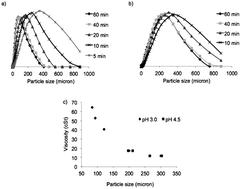Sustainable barrier materials based on polysaccharide polyelectrolyte complexes
Abstract
There is a need for sustainable, ecologically compatible barrier materials as a replacement for petroleum derived compounds for packaging and other applications that generate significant land and ocean pollution. Polysaccharides are natural biologically produced or derived polymers manufactured in large quantities for many industries including food and papermaking. Polysaccharide based films and coatings, however, do not exhibit adequate barrier performance especially in aqueous systems due to their inherent solubility in polar media. This work demonstrates a coating based on polysaccharide polyelectrolyte complexes (PPC) that exhibit barrier performance. Specifically, paperboard coated with a PPC material comprised of nanostructured fibrous particles of carboxymethyl cellulose and chitosan exhibits oil and water barrier properties at room temperature and 80 °C. The coating also resists toluene, n-heptane, salt solutions and exhibits improved wet and dry mechanical and water vapor barrier properties. These results show that PPC based materials may be competitive barrier alternatives to synthetic polymers for many volume commercial applications. In addition, this work demonstrates that new unexpected properties emerge from multi-polysaccharide systems engaged in electrostatic complexation, enabling new high performance applications.



 Please wait while we load your content...
Please wait while we load your content...